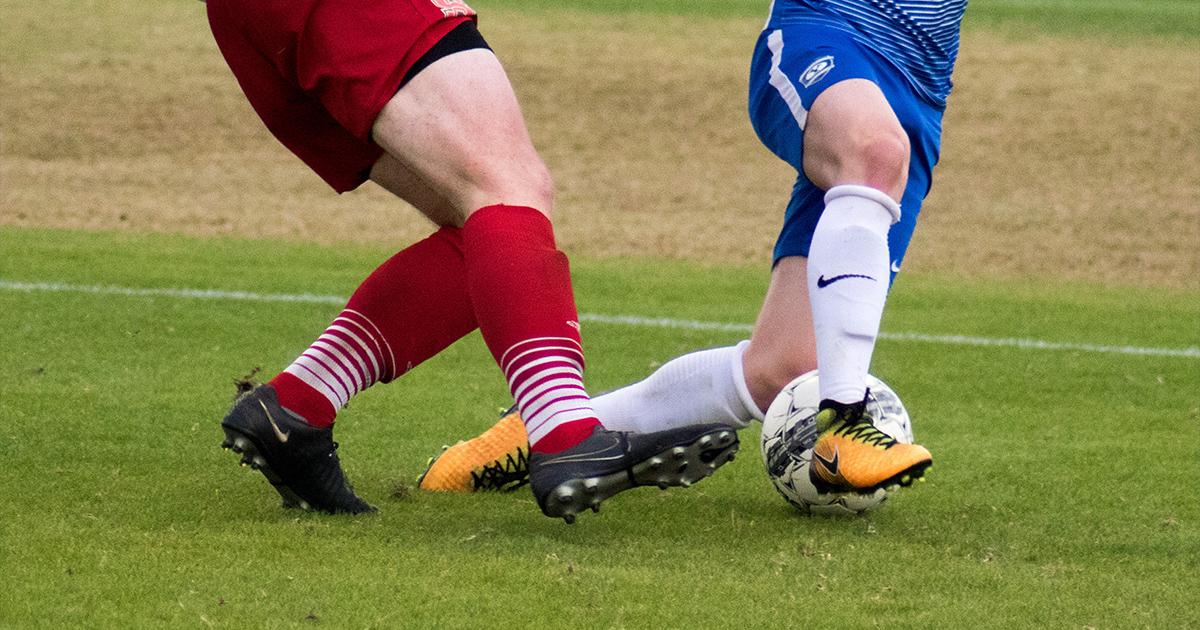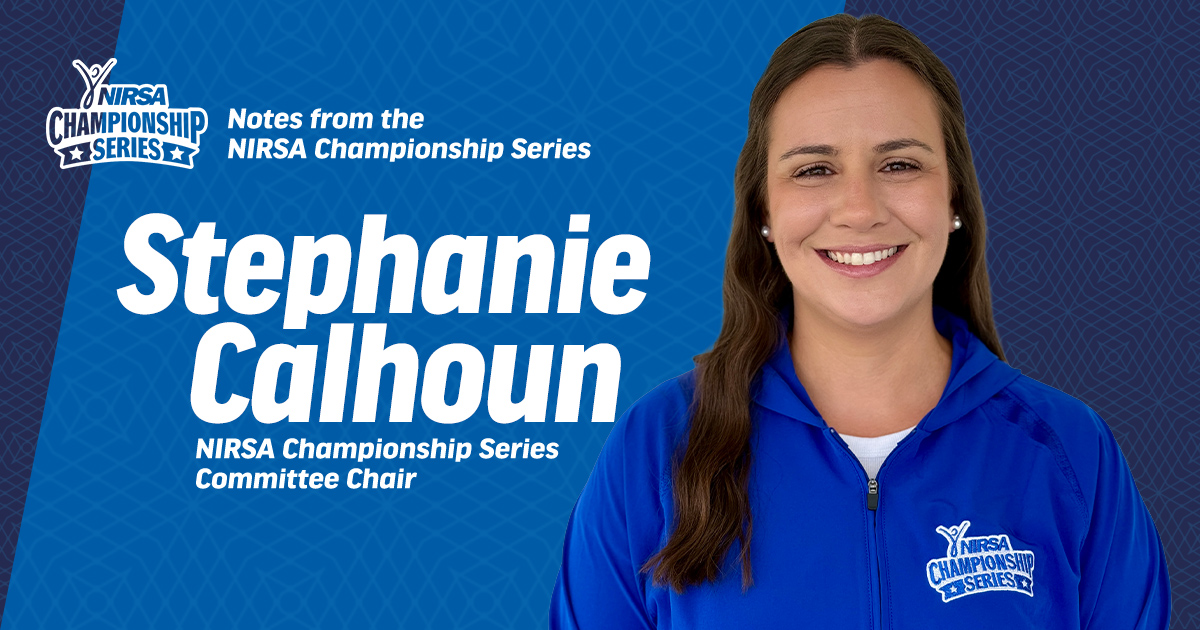Like most collegiate recreation sports, club soccer was heavily impacted by the coronavirus pandemic this last year. Schools across the continent were forced to cancel not just individual games, but entire club sports seasons. Nearly 100 teams—more than 2,000 students—usually compete every year in the NIRSA Championship Series National Soccer Championship Tournament, yet even NIRSA had to cancel its scheduled 27th annual championships in the fall of 2020 because of the pandemic.
With the rollout of vaccines in recent months, however, many recreation departments and the participants they serve are planning for a return to play in the upcoming fall semester. The NIRSA Championship Series too is busy planning for the 2021 NIRSA National Soccer Championships, which will take place November 18-20 in Foley, Alabama. So I recently connected with a few club sports professionals and student participants to understand how club soccer teams were affected by the pandemic and how they are currently facilitating a return to the pitch.
View this post on Instagram
Understanding the disruptors
The worst outcome faced by most clubs was seeing their seasons cancelled altogether. When that happened, student participants and programmers alike shared three significant repercussions: network dysfunction, a reduction to opportunities, and barriers to access.
Network interruptions
Because of the level of commitment and competition, club soccer teams are usually tight knit communities. But anyone who has ever been a club captain will tell you that a roster of 25 players is no easy thing to manage, let alone an entire league of teams. So when seasons were cancelled, teams fell out of communication with one another and some players graduated or moved on. Those who remain have effectively missed out on a year of team recreation. And when leagues do return to play, there will be two “incoming freshman classes” that teams will have to recruit and manage. For many programs, it will almost feel like starting from scratch when it comes to reacquainting new and old teammates.
Opportunity limitations
Group capacity restrictions were a common obstacle a number of programs looking to continue engagement and to contend with. At the University of Houston, “just ten individuals were able to practice last fall before restrictions were eased in the spring,” says Jon Janis, Assistant Director of Programs and Student Staff Development at the University of Tennessee, Knoxville and former Assistant Director of Rec Life and Family Programing at the University of Houston. Jon is also current Chair of the NIRSA Championship Series Soccer Work Team.
Meanwhile, more than 1,000 miles away at Elon University, President of Elon Men’s Club Soccer and a senior majoring in Business Analytics Nathan Widlake was frustrated with “having to have a 25-person capacity limit for the entire fall season and the first half of spring season” because of how it limited opportunities for his community—especially for younger players looking to breakthrough. Capacity has since eased to allow 50 individuals, but, Nathan says, “Because there was only a limited amount of space, we had to be very selective. I think we probably missed out on the opportunity to see a lot of freshmen who were unable to get a fair look.”
Barriers to access
Additionally, commuting to and from campus was a challenge for some—especially for larger campuses that had shifted to remote learning options. “Some students live up to an hour away with traffic,” explains Jon. And COVID-19 protocols meant “parking passes are also required. So, for many club soccer participants, the question became ‘is it worth driving an hour for just an hour and a half of practice just to drive another hour back home?’”
Pursuing safety protocols
To allow players to return to their teams, a number of safety protocols should be followed to facilitate a quick and safe return to play:
- Introducing and enforcing social distancing protocols
- Mandating masks when social distancing isn’t possible
- Inoculating participant populations
As these tools—which are being successfully deployed around the globe—gain traction, we can expect to begin seeing more teams travel greater distances in search of more competitive games. But this will continue to happen on a state-by-state, school-by-school, team-by-team basis.
View this post on Instagram
Tips for sport club professionals in campus rec
Many schools, however, are not quite ready for a full return to play. For those participants and programmers, there are alternative ways to keep students actively involved with their teams. Nathan says,
“Over the past year, I’ve had to find activities for the team. I was able to organize an intrasquad tournament. So even though we weren’t allowed by Elon to travel and compete against other schools, we were able to select captains and create player drafts for a tournament. It really helped to keep the competition alive.”
Socially, Nathan kept the Elon Men’s Club Soccer team engaged by making fill-in brackets for the 2020 UEFA Euro tournament, “which helped drive communication among club members.” There is also general consensus that club soccer professionals should hold meaningful conversations with students and school officials to discuss hesitations about returning to play and give all stakeholders an opportunity to voice concerns as they move to discover their school’s path to a safe return to play.
There are also many schools who are ready to take those final steps to return to seasonal competition and work to fully reintroduce club sports on campus to pre-coronavirus levels. The individuals interviewed for this article anticipate beginning competitions in the fall without restrictions. They seemed to agree this outcome will be in large part due to successful vaccination campaigns.
Vaccines will play a huge role in allowing students to get back out onto the field safely—especially for games against local, regional, and national competition, which all require some degree of travel. Vaccines will also allow for the return of important social activities for club participants such as team dinners and tailgates.
Additionally, recreation departments and club organizations might consider reallocating any unused funds from the past year for expanded team travel games or social events to “motivate students to come back out to play and interact with others,” suggests Chris McAlpine, Associate Director of Facility Operations at the University of Texas, Dallas and Co-Director of Competition for the NIRSA Championship Series National Soccer Championships. Such measures may help ease financial concerns and allow students to participate.
Healthy people and healthy communities
Physical exercise and community belonging are incredibly important to a student’s overall wellbeing. Both physical and mental health play key roles in our campus community’s wellbeing.
Chris adds, “I think on our campus, the mental health aspect has been most important. UT Dallas has high-achieving and intelligent students and they haven’t had the usual outlets for social interaction and physical activity for such a long time. So, that’s a real concern of ours, for the upcoming year.”
View this post on Instagram
There is broad consensus that schools and their recreation departments want students to return to the comradery, competition, and joy from sports participation in a safe environment. In the wake of extended lockdowns and isolation in response to the pandemic, the need for physical activity cannot be stressed enough.
- For more information about NIRSA soccer, contact Nicole Jackson, National Sports Programs Coordinator at NIRSA Headquarters.
Charles "Chuck" Steines is currently a student at Elon University and a member of the Elon Club Soccer Team. He is also currently interning at NIRSA Headquarters. You can reach him by email at csteines@elon.edu.




